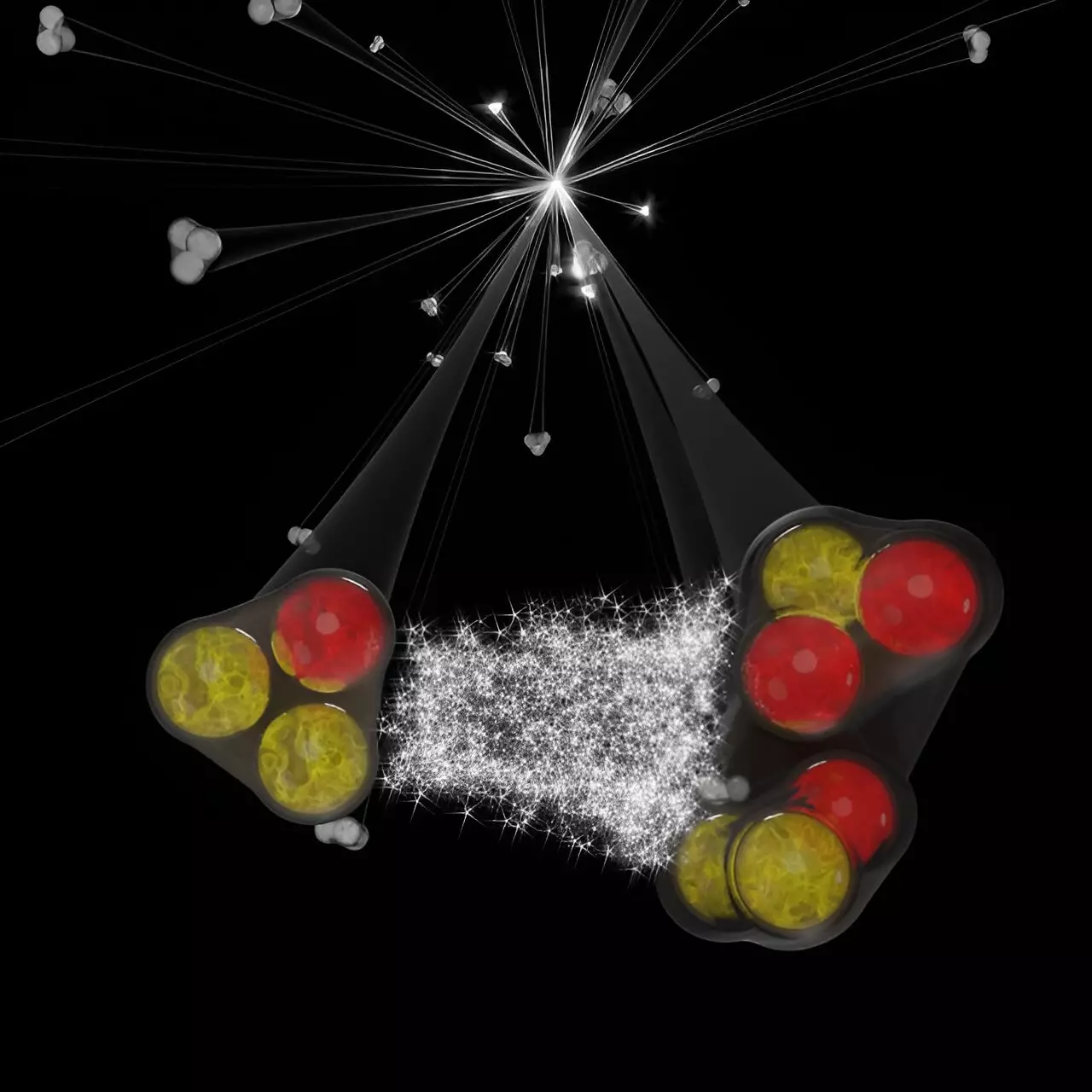The study of nuclear forces has long fascinated physicists, revealing an intricate tapestry of interactions that govern the behavior of matter at its most fundamental level. A recent publication by the ALICE collaboration in Physical Review X has significantly advanced our understanding of these phenomena, especially in relation to three-body systems. By analyzing the correlations within kaon-deuteron and proton-deuteron interactions, the ALICE collaboration is setting a new groundwork for exploring the complex nature of forces that govern not just nuclei, but also extreme astrophysical conditions such as those found in neutron stars.
Traditionally, nuclear forces have been studied through pairwise interactions, simplifying the models to interactions between two particles. However, this paradigm does not adequately account for the rich behaviors exhibited when three particles interact simultaneously. These interactions are pivotal for understanding the structure and stability of atomic nuclei, the characteristics of dense nuclear matter, and the composition within neutron stars. By investigating three-body systems, researchers can begin to unravel the complexities that arise from multiple interaction channels and the associated correlations.
Utilizing data from proton-proton collisions at the Large Hadron Collider (LHC), the ALICE collaboration leverages its sophisticated particle identification capabilities to explore the nuances of particle correlations. At a center-of-mass energy of 13 TeV, the experiments produced a significant number of particles in proximity—specifically at scales of around 10^-15 meters (or femtometers). The possibility that these particles may influence each other before dispersing into the surrounding environment poses an intriguing question. The dynamics of particle pairs, particularly in regard to their momenta and mutual interactions, can reveal much about the underlying forces at play.
In this context, the correlation function emerges as a crucial analytical tool. Measured correlations can indicate whether particles experience attractive or repulsive forces based on the probability of their relative momentum configurations. A correlation function value greater than one suggests an attractive interaction, while a value less than one indicates repulsion. The results from the kaon-deuteron and proton-deuteron systems showcase intriguing repulsive interactions at low relative transverse momenta, which indicates a noteworthy aspect of three-body nuclear dynamics.
The findings from the analysis are illuminating. They reveal that the average distances at which kaons and deuterons come into interaction are remarkably small, estimated around 2 femtometers. Such close proximities are critical for probing the nature of the forces at work. The successful correlation of kaons and deuterons can be modeled effectively using two-body frameworks that account for both Coulombic and strong interactions. However, the proton-deuteron correlation defies simple two-body interpretations, indicating that a more comprehensive approach is essential.
To address the complexities associated with proton-deuteron interactions, researchers must implement three-body models that account for the internal structure of the deuteron. The impressive fit obtained through theoretical calculations that encompass both two- and three-body interactions underscores the sensitivity and relevance of these measurements in revealing short-range dynamics.
The implications of this research are vast. The innovative methodologies applied in studying three-body interactions offer a new lens through which scientists can explore nuclear physics. Future investigations are set to extend these techniques beyond kaon and deuteron interactions to examine three-baryon systems, particularly those comprising strange and charm quarks. The prospect of utilizing findings from upcoming LHC Runs 3 and 4 promises a wealth of experimental data that could challenge existing models and enhance our understanding of nuclear matter.
The ALICE collaboration’s recent work represents a significant leap in the understanding of three-body nuclear forces, bridging theoretical models and experimental data. As the field evolves, the continued exploration of complex interactions at a fundamental level will not only illuminate the fabric of matter but also provide clarity on some of the universe’s most enigmatic phenomena. The stage is set for a new era of discovery, where the intricate dance of particles unfolds under ever more refined observational techniques.


Leave a Reply
You must be logged in to post a comment.